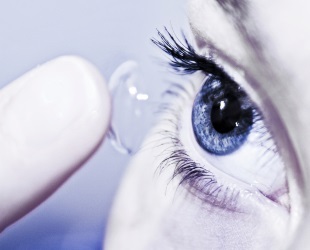
Contact lenses, which have the function to correct vision, can be considered as non-implantable optical devices that have contact with the eye tissues. There are many different classifications of the types of these devices by specific parameters.
Use objectives and design
Types of lenses for the intended purpose
According to the purpose, contact lenses are isolated:
- 1. Purpose of use and design of
- 2. Based on
- manufacturing materials 3.
- lens wear and replacement modes Optical,for correction of refractive error( astigmatism, presbyopia, nearsightedness, farsightedness).
- Cosmetic lenses correct various congenital or acquired eye injuries due to injuries.
- Decorative strengthens the natural color of the eyes or, conversely, changes it to another. In colored lenses there are colored dyes, which reduce the parameter of oxygen permeability.
- Therapeutic - these are contact soft lenses. Due to hydrophilicity they provide bandage protection of the cornea. They also serve as a reservoir for prolonged action of drugs, contributing to the treatment of the cornea.
Design features
Contact lenses for design are divided into:
- Spherical, correcting nearsightedness and farsightedness.
- Toric, adding correction of astigmatism.
- Multifocal corrective presbyopia.
Based on the
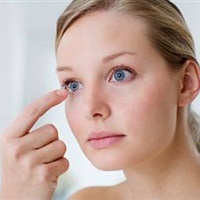
fabrication materials. Read more - night lenses for vision correction. How to safely restore vision?
In the article( tyts) what is Blepharospasm.
Treatment of folk remedies of Sjogren's syndrome!http: //moezrenie.com/bolezni/ narusheniya-tsirkulyatsii-vodyanistoj-vlagi / sindrom-shegrena.html
The main types of
This classification divides the lenses into:
- rigid,
- soft( hydrogel and silicone-hydrogel).
Most people wear soft lenses( about 90%).
Safe wearing of lenses in the daytime is provided by the oxygen transmittance of the material from 24 to 26 units. Safe sleep in lenses is guaranteed with this parameter at least 87 units. Silicon-hydrogel lens of the latest generation has this indicator of 100-140 units.
Pros and cons of soft lenses
The properties of materials used for soft lenses are divided into:
- Polymers are nonionic with low humidity( less than 50%) and high( more than 50%).
- Polymers ionic with low humidity( less than 50%) and high( more than 50%).
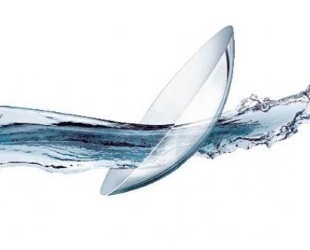
Popular lenses from silicone hydrogel belong to groups with a low moisture content. They are characterized by excellent durability and strength. They are thinner, more technological in manufacturing. But they have low oxygen transmittance, which contributes to the development of corneal edema.
Lenses of high moisture content are more comfortable. A person adapts to them faster and can wear longer. However, they are characterized by fragility and frequent formation of large deposits( especially lenses of group 4).These lenses on the eye quickly dehydrate and sometimes do not provide a stable visual acuity.
Lenses from ionic polymers are more likely to accumulate protein deposits than non-ionic polymers.
Features of rigid lenses
They are made of elastic thermoplastic. Their main disadvantage is airtightness. Another disadvantage is the propensity to form a protein under the lenses.
But their advantages are impressive:
- strength,
- ease of care,
- corrects corneal astigmatism for a few diopters,
- they are easier to put on and take off than soft, because they have a larger diameter.
Modes of wearing and replacing lenses
Classification by wearing rules
A variety of wearing modes divides contact lenses on:
- day wear( DW), are removed at night,
- flexible( FW), sometimes they are not removed one or two nights,
- prolonged( EW), worn for 7 days continuously,
- continuous longwearing( CW), up to a month.
The ability to continuously wear lenses up to 30 days is provided by high oxygen permeability of silicone-hydrogel and gas permeable materials.
According to the results of medical research, when wearing such lenses during the year the probability of developing microbial keratitis is 0.18%, and a decrease in visual acuity is less than 0.04%.These parameters are higher than for daytime wear lenses. Nevertheless, such lenses can be safely used if prolonged wearing is necessary.
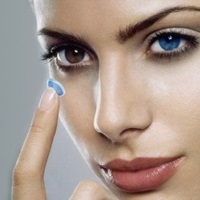
Pay attention - how to wear contact lenses. Also in the article and advice on care.
In the news( link) how to choose contact lenses.
Causes of Lagoftalm!http: //moezrenie.com/bolezni/ zabolevaniya-vek / nepolnoe-soedinenie-vek-lagoftalm.html
Traditional lenses
These are lenses with a traditional wearing time of six months or more. Due to the reduced moisture content( compared to the lenses of routine replacement), traditional lenses are characterized by greater strength and high resistance to protein deposits.
When choosing these lenses, one should pay attention to the oxygen permeability index. Their dignity is the low price. But they have a serious drawback - the risk of damage to the cornea.
Everyday replacement of
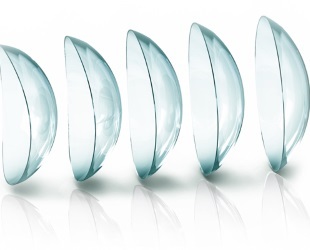
These are lenses that are replaced every day. They are sold in packages of 15 or more pieces.
Specialists consider them to be the most healthy for the eyes for the following reasons:
- does not lead to corneal damage,
- does not have complications,
- does not require care.
Daily lenses are attractive for those who:
- puts them on irregularly,
- goes on trips requiring eye strain,
- visits sauna,
- goes on a trip.
The disadvantage of disposable lenses is their high price. For daily wearing one package is not enough.
Planned replacement
For lenses of planned wearing, the period of use is from a week to a quarter. They are placed in the factory packaging up to 6 blisters. Compared to traditional long-term lenses, the planned lenses are more healthy for the eyes( provided they are properly handled).
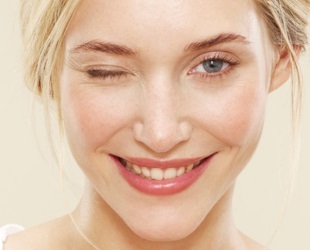
The possibility of a routine replacement of contact lenses is a progress in the correction of vision.
Replacement of lenses with different degrees of frequency has a number of significant advantages over traditional lenses:
- higher oxygen permeability,
- excellent hydrophilicity( moisture permeability),
- frequent replacement,
- possibility of unplanned use of spare lenses,
- low risk of eye infection.
These are the lenses most patients wear.
Regardless of the type of contact lenses, it is necessary to observe certain requirements for their use:
- care strictly according to the recommendations of the specialist,
- should be worn exclusively for the specified period,
- not to use the lenses after the expiry date.
If you do not forget about these rules, then any contact lenses will provide comfort in wearing and safety for health.
